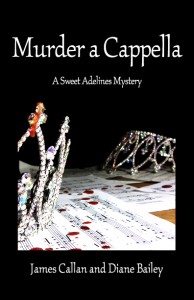Today, I’m furnishing the blog. So, it isn’t an interview. But rather, it’s a take off on the old saying, “You can’t tell a book by its cover.”
take off on the old saying, “You can’t tell a book by its cover.”
I know most contracts give the publisher the right to select the cover. So, that’s that?
Maybe not. Many times the publisher is willing to accept some input from the author. You should always ask for that. Why? The cover is a reflection of your book, and you as well. And it’s your career. So, let’s talk just a little about covers. In such a short post, I cannot cover this subject in-depth, but perhaps I can get you to think more about your cover designs.
The conventional wisdom is, “You can’t tell a book by its cover.” While that is true, it is also true that, “You can sell a book by its cover.” The cover is the first thing a prospective reader sees. If it doesn’t generate some interest, most likely that person will move on to another book. It is also the first impression the reader gets of you, the author. You know what they say about first impressions. The cover is the first impression the reader gets of your book and of you. Make it not just a good cover; make it a compelling one.

How do you make a striking cover? It should reflect something about the book, but you have a lot of leeway. Select some part of the book that lends itself to a striking cover. Remember, your cover is competing for attention with others, perhaps hundreds or thousands of other covers. Scatter several books on a table and see which one jumps out at you. Decide why. Try this several times with many different books. What grabs your attention? Do those have something in common? Remember, the first task is to get the prospect to pick up your book.
Usually, this should be a clear, single image. Except in unusual cases, which will require a superior cover designer, stick with a single idea. This is a key place where you would like to have input to the cover designer. He likely will not have read the book. You need to guide him to some key idea, scene, theme, message, etc. that you’d like reflected. But don’t forget “striking.”
What about fonts? Avoid the standard fonts we generally use. While the text might look great in New Times Roman or Cambria, just raising up the point size will not make it a good cover font. Consider more unusual fonts. If this is a dark book, there are fonts that can convey that feeling. If it’s a romance, there are fonts that look more … okay, maybe they don’t look romantic, but look, well, more like Valentine ’s Day.
Certainly pick one that is very easy to read. Don’t pick one that is too flowery. You do not want the reader to either misread the title, or just give up. There are lots of other books. Why waste five seconds on a title difficult to read. Certainly, this applies to the author’s name as well. Make it very readable. You’d like the prospect to remember not only the title but your name. If it’s hard to read, your name doesn’t get into her memory at all.
Consider all caps. Put the author’s name in a different typeface. Again, not Times Roman. Not Helvetica. Easy, clear, memorable. Your name should be imprinted on the browser’s mind, whether she knows it or not.
The entire cover for the mystery Cleansed by Fire was filled with raging flames  consuming a church. It was striking. And it foreshadowed the an important part of the book.
consuming a church. It was striking. And it foreshadowed the an important part of the book.
The cover for the mystery Murder a Cappella had drops of blood dripping from a crown on to a sheet of music. Eye catching. And it reflected the theme of the book.
To sum up, ask for some input on the cover. Strive for a striking cover. Use only two fonts, one for the title, one for your name. Avoid standard fonts in favor of a font that reinforces the feeling of your book. And most of all, remember the importance of the cover. You’ve spent months on the book. The thing that the prospect makes her first decision on is not the book, but the cover.

Very timely blog for me, Jim. It won’t be long before Oak Tree will be designing a cover for me and yes, I’d like to have input on that. I love your book covers — Cleansed by Fire, which I have here, is amazing. I’ll be remembering your advice and opinions while my cover time with the designer arrives.
Thanks for your comment, Eileen. Oak Tree will let you have input – and sometimes it’s needed. Good luck. Will be interested in seeing your book – and its cover.
Good post, Jim, and some good comments, too. I’ve found one problem with unusual fonts, and that’s that the “j” in Marja often doesn’t look like a “j”. Oh well…
Marja Mcgraw
Thanks, Marja. One does need to look at the end results on fonts. Sometimes, they can play tricks on you. Thanks for reminding us.
Cool post! And the cover of Cleansed By Fire is fantastic. Because I’ve read the book, I can see how well it fits!
Thanks, William. Appreciate the comment – and glad you read the book.
I heard a cover designer speak recently at a writer’s meeting. She said that ‘they’ are encouraging writers to enlarge their name on the book to look like the big-wig authors do. the concept of the enlarged name suggests that the writer is successful, rich and has so many books out there that they have earned name recognition. Something to think about…..
I think that’s a great idea. Sorry I didn’t hear about it before. I will push for that on my next book (see if the publisher agrees with that approach). Thanks.
Excellent points. I receive comments all the time on my covers, whose images have a color wash that matches the titles (the Blue Virgin, The Green Remains). Book three comes out this spring and readers already know what color wash will be on The Scarlet Wench.
The color wash is a great idea for your books. I’ve seen them, and they work. They reinforce the title. Thanks for the comment.
Also, if you are doing a series, the covers should be similar ( think the ‘Twilight’ series)…so your followers will be able to instantly identify them.
Good point – that I should have made. Readers of your series will be immediately drawn to your cover. Thanks for an excellent comment.
In the old days, covers only needed to look good up close and personal on bookshelves. Now they have to look stunning postage stamp size on Amazon. And that’s a whole other art form.
You’re so right, Caleb. Today requires a different – at least an extra – look at how we design covers. Some covers that can look great in full size, are too confusing to bother with in the postage-size pictures on the Internet. That also means you need to look at the fonts you use for the title and the author’s name. Will they be readable once reduced. Excellent point. Thanks.